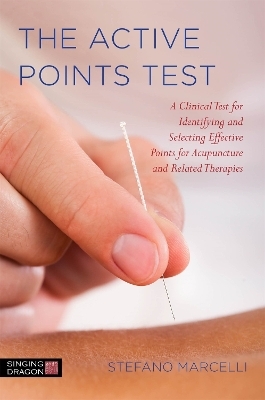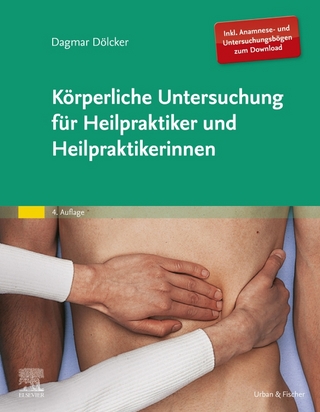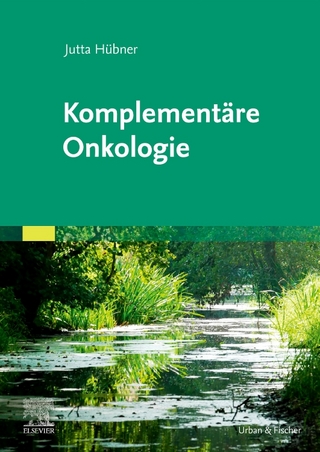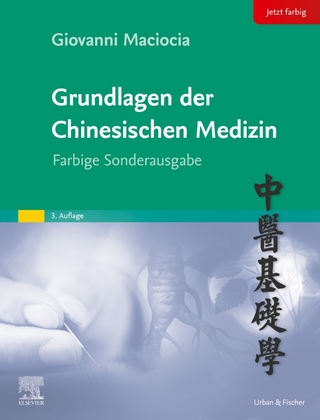
The Active Points Test
Singing Dragon (Verlag)
978-1-84819-233-1 (ISBN)
The Active Points Test is a clinical instrument for identifying and selecting the points on the skin that are most effective for treatment. These points may be close to the seat of the disease, for example on the shoulder for periarthritis, or far away, for example on the ear or head for stomach pain or a cough.
Drawing on principles from TCM and Western medicine, Dr Stefano Marcelli sets out the theory of the approach and offers detailed guidance on how to carry out the test and how to interpret the results, as well as explaining how the test can be used in different therapies. The test is based on the discovery that a patient experiencing an ongoing symptom can be made aware of the capacity of a few points on the skin to treat his or her discomfort. The test involves stimulating the skin to the appropriate degree whilst asking the patient to identify whether there is any change in the symptom he or she is suffering, and can be used to treat a wide range of symptoms, from articular pain to migraine, tachycardia, asthenia and depression. Published for the first time in 1995, this substantially updated edition contains the most recent supporting evidence and many new explanatory diagrams and photographs.
Providing a comprehensive and effective system for point selection, this is essential reading for practitioners and students of acupuncture and related reflex and manual therapies, including massage, tuina, Shiatsu and Rolfing.
Stefano Marcelli graduated from the University of Bologna with a degree in Medicine and Surgery in 1982. He has since trained in Acupuncture, Auricular therapy and Mesotherapy in Italy, France and China. He initiated the anatomical comparative approach in acupuncture research. He is the founder of the Italian School of Mesotherapy and has written ten books on acupuncture and Mesotherapy. He lives in Darfo Boario Terme (Brescia), Italy.
Foreword by David Alimi, MD. Foreword by Dr Ioan Florin Dumitrescu. 1. The Test. 1.1. Definition and particulars. 1.2. Indications for and limitations of the Test. 1.3. Therapies for which the Test is useful. 1.4. An ex adiuvantibus criterion. 1.5. Kinesiology and Applied Kinesiology. 1.6. Other tests in acupuncture. 1.7. The Acupuncture Energy System. 1.8. The difficulties of acupuncture. 2. Practice. 2.1. Initial question. 2.2. Final observations. 2.3. One nail drives out another. 2.4. Materials. 2.5. Cleaning and disinfection of the skin. 1. Classification of the symptom. 2. Explanations and instructions to patient. 3. Looking for the painful points. 4. Execution of the Test and results. 2.7. The Test's persistent activity effect. 2.8. Size and electrical characteristics of the points. 2.9. Distance between the points. 2.10. Clinical-statistical observation evidence. 2.11. Non responders. 3. Choosing Points. 3.1. Two criteria for choosing. 3.2. Quick choice points. 1. Local points. 2. Paravertebral points. 3. Spondyloid points. 3.4. Traditional Chinese Acupuncture, tuina and shiatsu. The Extraordinary Channels. Functional groups of acupuncture points. 3.5. A few more words about palpation. 3.6. Auricular puncture. 3.7. Mesotherapy. 3.8. Neural therapy. 3.9. Western manual therapies. 3.10. Medical history and blind acupuncture. 3.11. Duration of the Test (how many points should be found active). 3.12. Acupoint formulas. Chewing and digestive system. Genito-urinary system. Cardiocirculatory system. Locomotive system. Nervous system. Cutaneous system. Ears and eyes. 4. Explanation. 4.1. Neurophysiological interpretation of the Test. 4.2. The Qi interpretation. 4.3. Placebo and nocebo effects. 4.4. Psychological implications. 5. Therapy. 5.1. Therapy following the Test. Acupuncture and the cross-shaped pattern. Auriculo puncture. Mesotherapy. Neural therapy. Manual techniques. 5.2. In summary. 5.3. Clinical cases. 5.4. Discussion and conclusions. 6. Perspectives. 6.1. Use of the Test in borderline cases. 6.2. Self-administration. 6.3. Towards a more rational therapy. 7. Expert Opinions. 7.1. In order of arrival. 8. The Active Points Test in auricular puncture. Preface to the second edition. Outline. Examination of the auricule and application of the Test. Case study. Biographical references. Web links and bibliography. Index.
| Erscheint lt. Verlag | 21.9.2014 |
|---|---|
| Zusatzinfo | 62 black and white photographs and diagrams |
| Verlagsort | London |
| Sprache | englisch |
| Maße | 154 x 229 mm |
| Gewicht | 338 g |
| Themenwelt | Sachbuch/Ratgeber ► Gesundheit / Leben / Psychologie ► Alternative Heilverfahren |
| ISBN-10 | 1-84819-233-9 / 1848192339 |
| ISBN-13 | 978-1-84819-233-1 / 9781848192331 |
| Zustand | Neuware |
| Haben Sie eine Frage zum Produkt? |
aus dem Bereich


